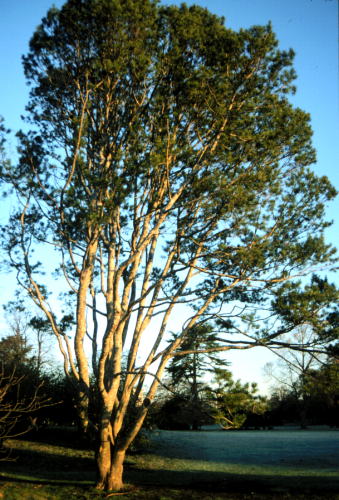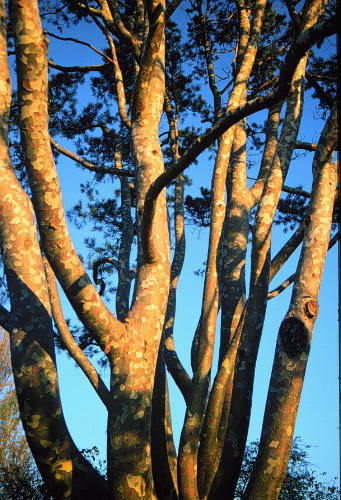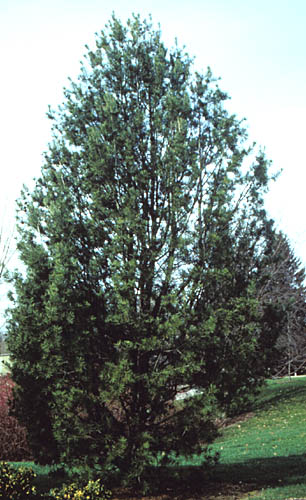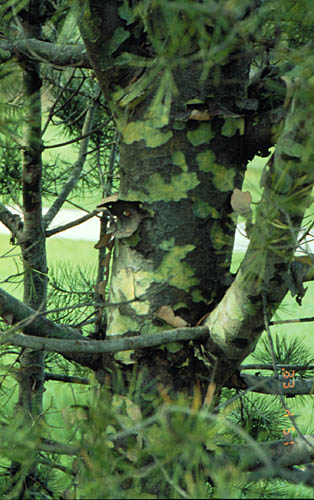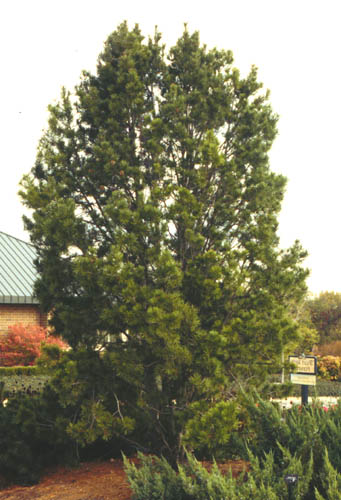Pinus bungeana
Lacebark Pine
Pinaceae
ExpandHabitat
- native to northern and central China
- cold hardy to zone 4
Habit and Form
- evergreen tree
- multi-trunked with an open broad form with age
- shrubby when young
- 30 to 40' tall with a similar spread
- medium to fine texture
- slow growth rate
Summer Foliage
- 3 needles per fasicle
- 2 to 4" in length
- medium green needles, waxy or "plastic"-looking
- stiff, pointed needles
- raised midrib
- serrated margins
Autumn Foliage
- no fall color (remains green)
- needles persist 4 years
Flowers
- monoecious
- no ornamental value
Fruit
- tawny brown cone
- oval, 2 to 3" long
- scale is broad with a triangular spine
Bark
- exfoliates to reveal brown, rust, green, and cream bark
- highly ornamental
- new stems are green to gray and are fairly thick
Culture
- adaptable to most soil types and pH as long as they are well-drained
- full sun to light shade
- moderately drought tolerant
- root prune for successful B&B transplanting
- probably not tolerant of air pollution
Landscape Uses
- good for bonsai
- good accent tree, if planted to show off bark
- plant near patio where bark can be seen
- specimen
Liabilities
- weak crotches and multi-trunk habit causes limb breakage and trunk splitting in heavy snow and ice
- desired bark characteristics do not become prevelent for at least 10 to 15 years
- expensive and difficult to locate
ID Features
- needles in 3's, with a raised midrib
- needles very sharp to touch
- interesting mosaic bark
- multi-trunked
- medium green, "plastic"-like needles
Propagation
- by seed, no pregermination requirements
Cultivars/Varieties
'Compacta' - A dwarf form, it grows more slowly than the species with the same striking bark.
'Rowe Arboretum' - This selection from an Ohio arboretum displays a more uniform growth habit than most seedlings of the species. The branch structure is denser and neater.
